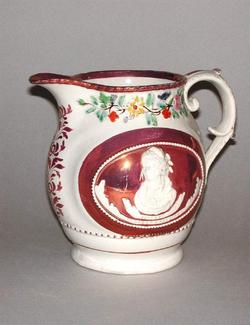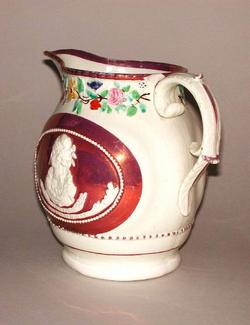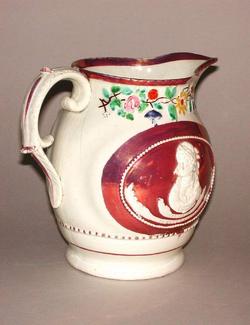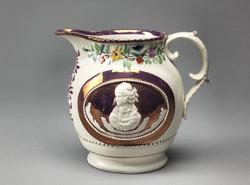Current Location: In storage
Maker(s)
Production:
Unidentified factory
(Probably)
Entities
Categories
Description
White earthenware, relief moulded and painted with blue, green, yellow, orange, pink, and brown enamels and pink-copper lustre.
Ovoid form jug with projecting base, curved neck and projecting lip, and a scrolled loop handle with leaf moulding. Decorated on both sides with a cameo- type bust of Queen Caroline above two foliated strips inscribed 'SUCCESS' and 'TO QUEEN CAROLINE', with beading around, all on a copper-pink oval. Below is a band of lustre and white beading. On each side of the neck is a relief floral spray painted in enamels and pink lustre. A strip of lustre stylised foliage runs from lip to foot; the rim has a lustred 'rope' moulded edge. The underside is sl;ightly recessed and glazed.
Notes
History note: G.D.H. Rylands, until 1997
Legal notes
Given by G.H.W. Rylands in memory of his mother, Betha Wolferstan Rylands.
Measurements and weight
Height: 16.6 cm
Length: 19.2 cm
Acquisition and important dates
Method of acquisition: Given
(1997)
by
Rylands, G.H.W.
Dating
19th Century, Early
George IV
Production date:
circa
AD 1820
Note
In 1820, a Parliamentary Bill was placed before Parliament to dissolve the marriage of George IV and Caroline of Brunswick, on the grounds of her adultery. The couple, who were cousins, married in 1795 when George IV was Prince Regent, but they had been separated for some years by the time he became King and he did not want her as his Queen. She, however, had the passionate support of much of the population, and feeling in the country ran high. The Bill was eventually withdrawn, though Caroline was never crowned and died the following year. The jug was made to sell to the Queen's sympathisers and was probably made in large numbers.
People, subjects and objects depicted
Components of the work
Decoration
composed of
enamels
( in blue, bluish-green, yellow, orange, pink, and brown)
lustre
( pink (gold))
Materials used in production
Earthenware
Techniques used in production
Moulding
: White earthenware, moulded, andpainted in enamels and lustre.
References and bibliographic entries
Identification numbers
Accession number: C.52-1997
Primary reference Number: 75412
Stable URI
Audit data
Created: Saturday 6 August 2011
Updated: Tuesday 30 April 2024
Last processed: Wednesday 14 May 2025
Associated departments & institutions
Owner or interested party:
The Fitzwilliam Museum
Associated department:
Applied Arts
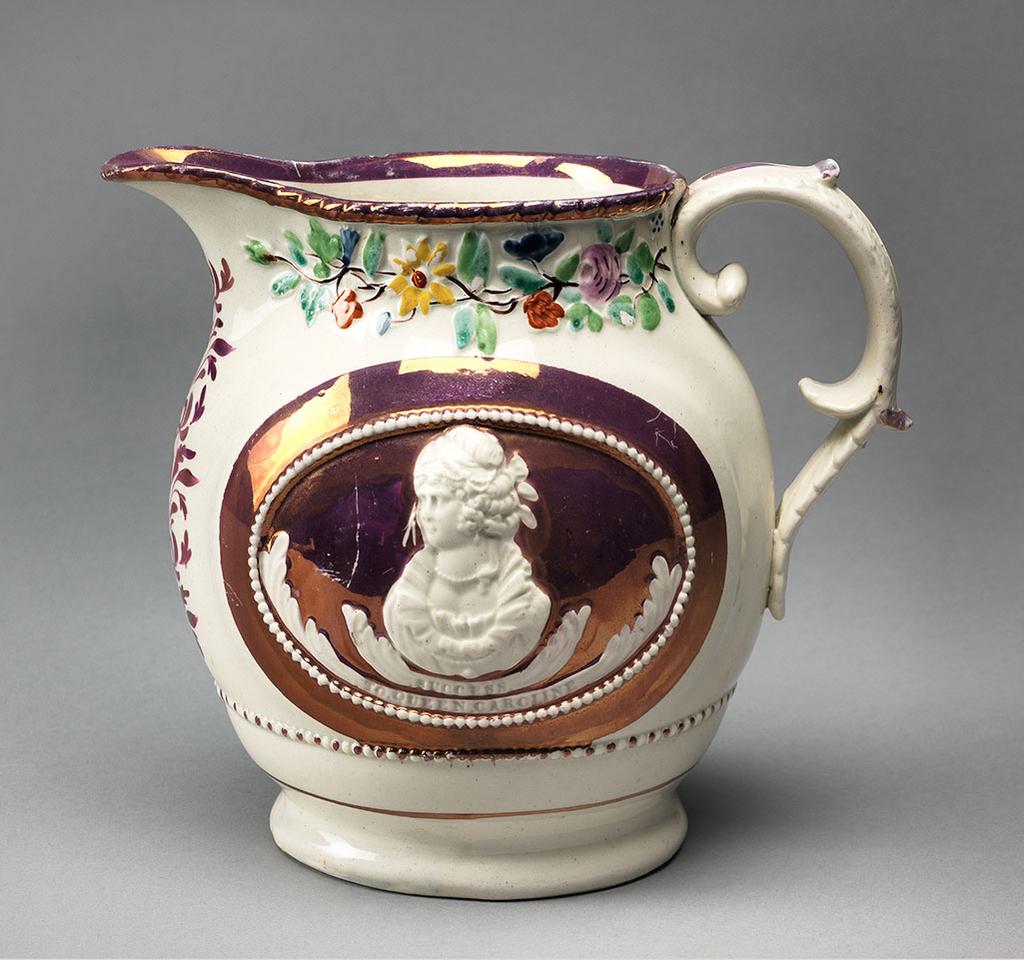
 IIIF Manifest
IIIF Manifest
